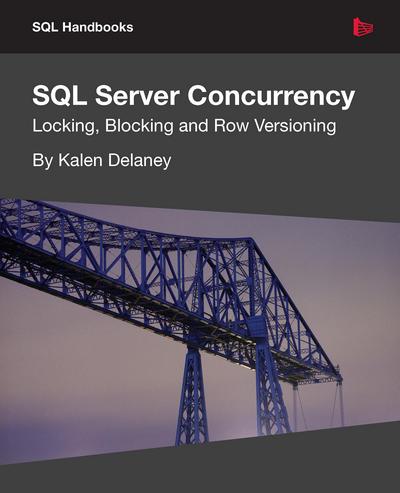
SQL Server Concurrency: Locking, Blocking and Row Versioning
A book for every DBA and developer who want to understand SQL Server concurrency and how to troubleshoot excessive blocking or deadlocking.
Tag(s): Relational Database
Publication date: 01 Jul 2012
ISBN-10: n/a
ISBN-13: 9781906434908
Paperback: 181 pages
Views: 10,138
SQL Server Concurrency: Locking, Blocking and Row Versioning
 A book for every DBA and developer who want to understand SQL Server concurrency and how to troubleshoot excessive blocking or deadlocking.
A book for every DBA and developer who want to understand SQL Server concurrency and how to troubleshoot excessive blocking or deadlocking.
Publication date: 01 Jul 2012
ISBN-10: n/a
ISBN-13: 9781906434908
Paperback: 181 pages
Views: 10,138
Document Type: Book
Publisher: Simple Talk Publishing
License: n/a
Post time: 25 Apr 2017 02:00:00
Kalen Delaney wrote:In general, database systems can take two approaches to managing concurrent data access: pessimistic or optimistic. Prior to SQL Server 2005, pessimistic concurrency was the only available model. SQL Server 2005 and later versions support both models, but pessimistic concurrency is still the default and is the recommended model until you have thoroughly tested optimistic concurrency and verified that the extra costs are worthwhile.
This book will examine the details of both concurrency models and explain what factors we must consider when comparing the relative costs on our systems. We'll also discuss concurrency concepts, such as transactions and isolation levels, that we must understand, no matter which concurrency model we're using.
Intended Audience
This book is for anyone using SQL Server as a programmer, an administrator, or even a user, who wants to understand how SQL Server manages multiple sessions, and what causes excessive blocking. It is also for those SQL Server professionals who need to know how to troubleshoot and solve blocking and deadlocking problems, and those who need to be able to compare the costs of SQL Server's two concurrency models to make the best choice for their systems and applications.
Tweet
About The Author(s)
Kalen Delaney has been working with SQL Server for 29 years, starting with employment with the Sybase Corporation in 1987. She worked at Sybase in the technical support department and then with the training organization, for five years. In 1992 Delaney became an independent trainer and consultant. In addition to teaching advanced SQL Server classes around the world, she has been writing regularly about SQL Server since 1995.

Kalen Delaney has been working with SQL Server for 29 years, starting with employment with the Sybase Corporation in 1987. She worked at Sybase in the technical support department and then with the training organization, for five years. In 1992 Delaney became an independent trainer and consultant. In addition to teaching advanced SQL Server classes around the world, she has been writing regularly about SQL Server since 1995.